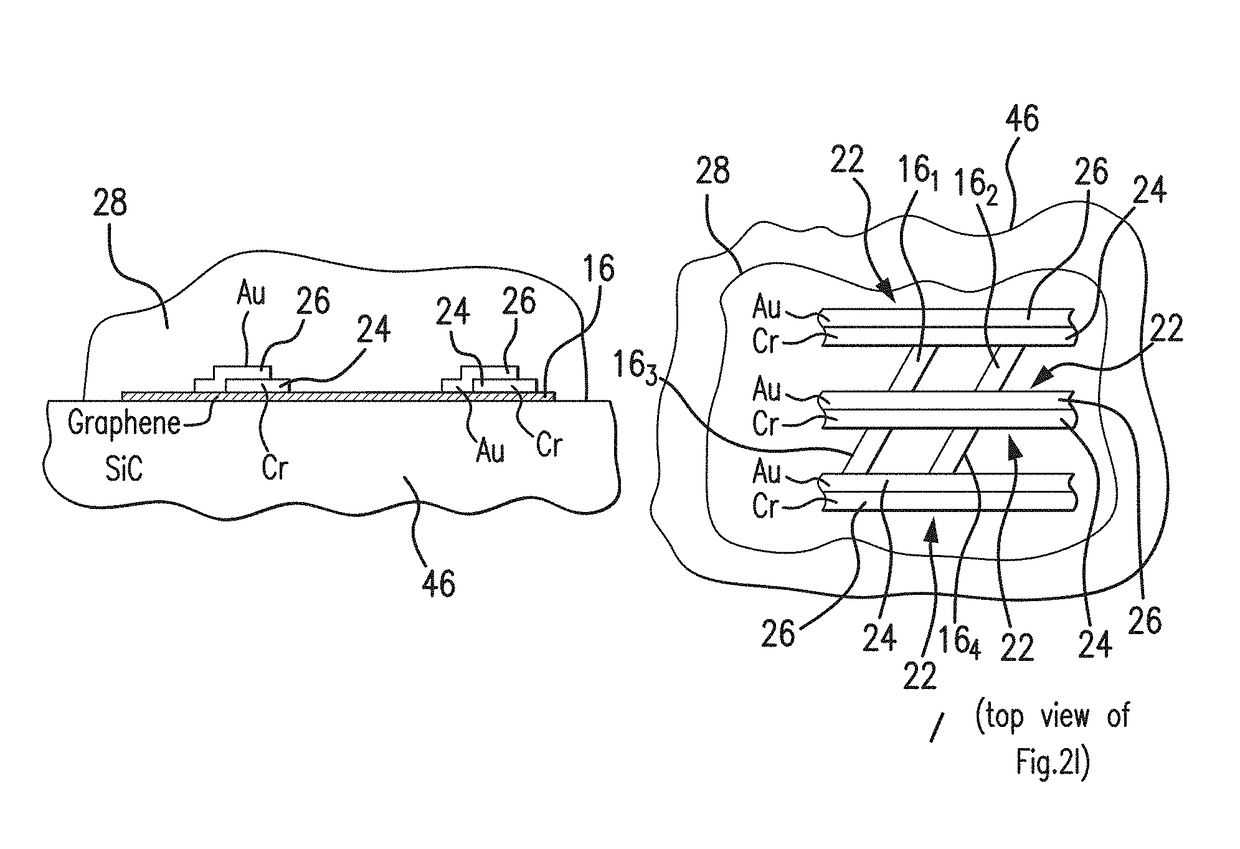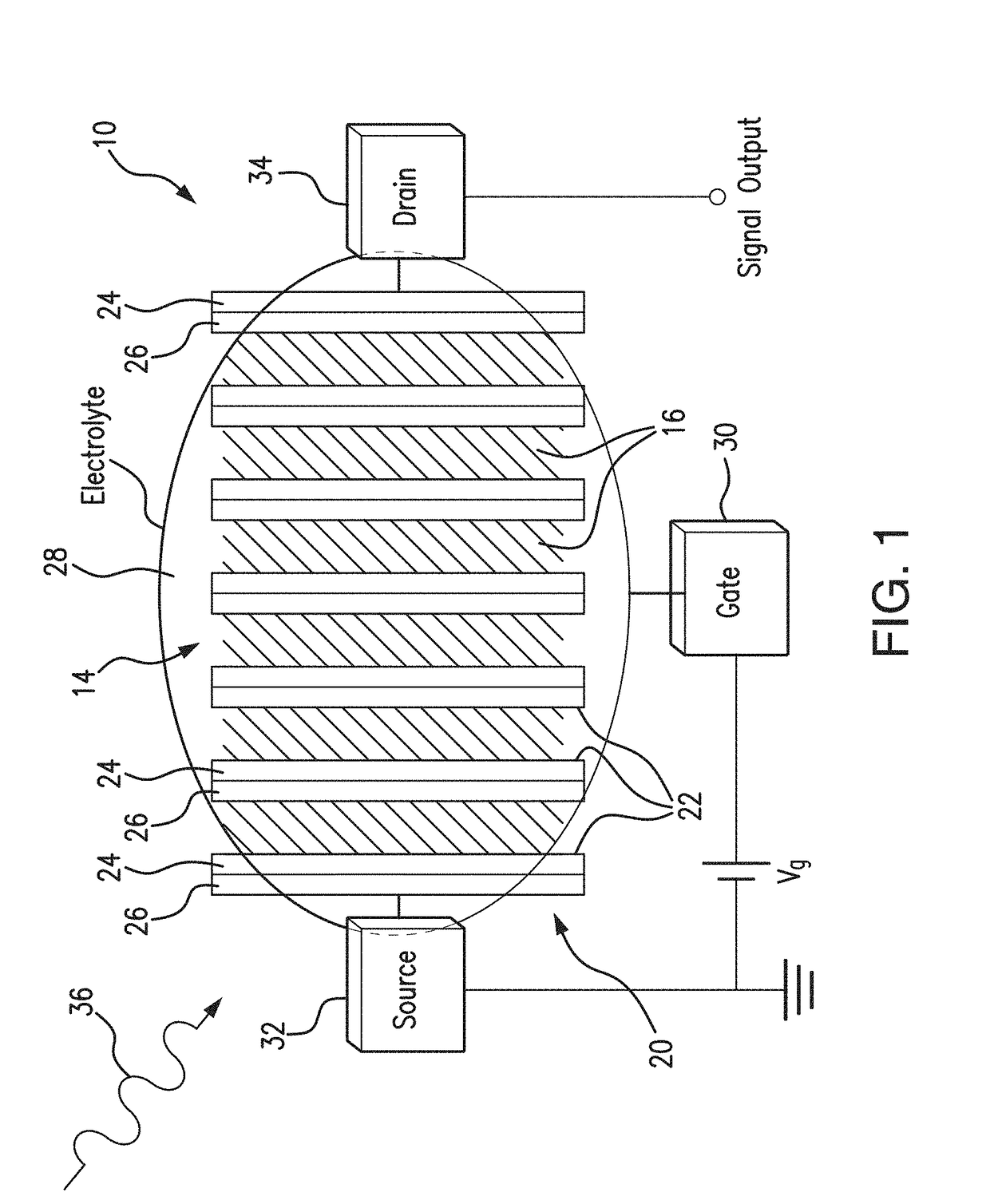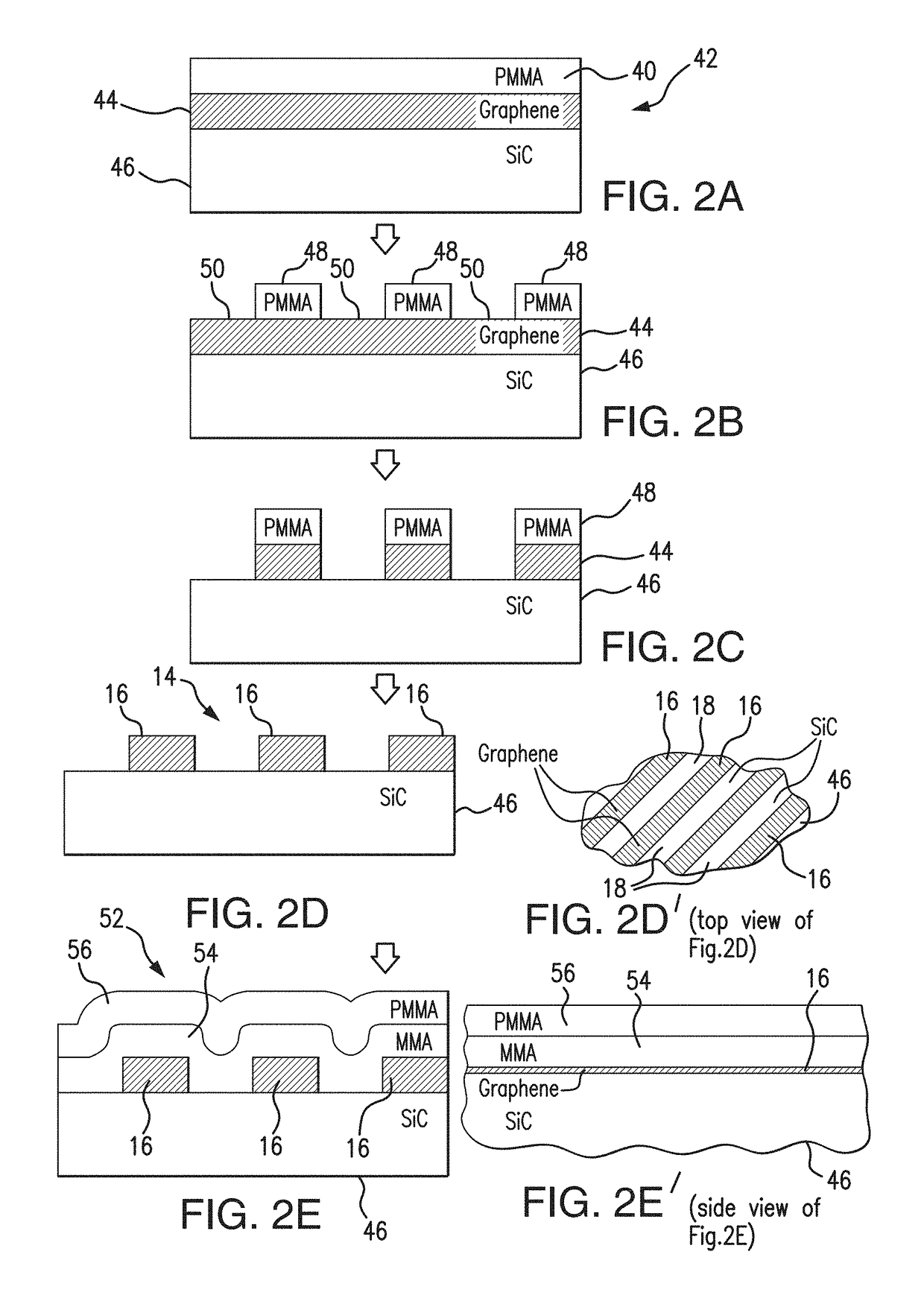Plasmon-enhanced terahertz graphene-based photodetector and method of fabrication
a graphene-based, terahertz technology, applied in the field of photodetectors, can solve the problems of inability to meet the requirements of the application, and limited approach, so as to achieve enhanced absorption and significantly improve the response of the photodetector
- Summary
- Abstract
- Description
- Claims
- Application Information
AI Technical Summary
Benefits of technology
Problems solved by technology
Method used
Image
Examples
Embodiment Construction
[0061]Referring to FIG. 1, the graphene-based plasmon-enhanced terahertz (THz) photodetector 10 is formed on a substrate (not shown in FIG. 1) and includes a micro-ribbon array 14 which is formed with micro-ribbons (also referred to herein intermittently as ribbons or stripes) 16, and a metal electrodes array 20 which includes metal electrodes (also referred to herein as electrode lines) 22 formed with the width ranging, for example, from 1 μm to 2 μm. The micro-ribbons 16 extend on the top surface of the substrate at a predetermined distance defined between the ribbons 16. Preferably, the electrodes 22 are bi-metal electrodes which have a layer 24 of a first metal, for example chromium (Cr) of the thickness of approximately 20 nm, and a layer 26 of a second metal, for example, gold (Au) of the thickness of approximately 25 nm.
[0062]As an example, the length of the graphene stripes 16 between two bi-metal electrodes 22 may be approximately 7.3 μm or shorter. The width of each micro-...
PUM
 Login to View More
Login to View More Abstract
Description
Claims
Application Information
 Login to View More
Login to View More - R&D
- Intellectual Property
- Life Sciences
- Materials
- Tech Scout
- Unparalleled Data Quality
- Higher Quality Content
- 60% Fewer Hallucinations
Browse by: Latest US Patents, China's latest patents, Technical Efficacy Thesaurus, Application Domain, Technology Topic, Popular Technical Reports.
© 2025 PatSnap. All rights reserved.Legal|Privacy policy|Modern Slavery Act Transparency Statement|Sitemap|About US| Contact US: help@patsnap.com



